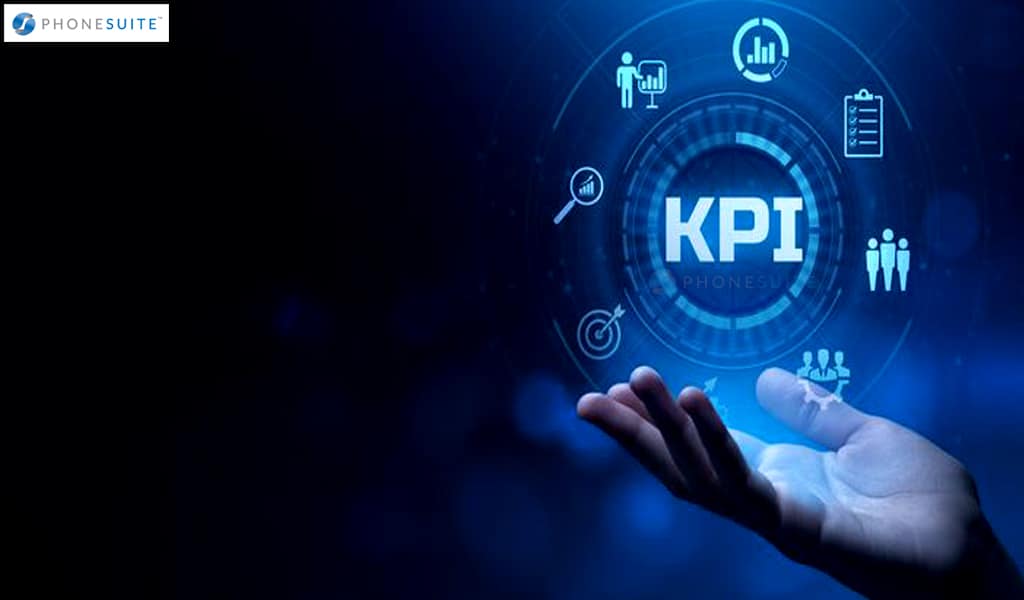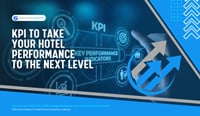In the hotel industry, managers and marketers must pay close attention to Key Performance Indicators (KPIs) in order to measure and assess the performance of their business. From occupancy rates to customer satisfaction scores, KPIs can make or break a successful venture. By understanding the different types of KPIs available, you’ll be better equipped to track your hotel’s success, spot areas that need improvement, increase profits, and make informed decisions. In this blog post, we’ll explore several useful key performance indicators for managing a hotel performance with confidence – empowering hoteliers everywhere!
What Is KPI?
Managing a hotel requires a significant amount of time, effort, and attention to detail. With so many moving parts, it can be challenging to determine the areas that require improvement or the aspects of your hotel that are performing well. That’s where KPIs come in. KPIs, or Key Performance Indicators, are measurements used to track progress towards specific goals or objectives. In the hospitality industry, KPIs can help hoteliers evaluate the effectiveness of their operations and identify areas that require improvement.
Occupancy Rate
One of the most critical KPIs for hotels is the occupancy rate. This metric measures the percentage of available rooms that are occupied over a specific period. A high occupancy rate is generally a good indicator of the hotel’s popularity, and it can also help hoteliers plan for peak and off-peak seasons. It is important to note, however, that a high occupancy rate does not necessarily mean that the hotel is making a profit.
The occupancy rate is an important metric for understanding the success and opportunity of a property. An optimal occupancy rate indicates demand, healthy local interest, and financial stability for an area. It is also an indicator of how attractive a region is for businesses and tourists, as there must be amenities that people or companies desire in order to invest in the area. Knowing the occupancy rate of a certain region can help inform investment decisions or even provide motivation to look for ways to improve the local landscape.
Furthermore, it’s essential for business owners and business owners-to-be to understand how this factor affects their income potential. In short, having data on occupancy rates can be extremely useful in many different aspects of business and real estate planning.
Average Daily Rate (ADR)
The Average Daily Rate (ADR) is a highly useful metric for anyone in the hospitality industry. It provides a measure of how successful an accommodation business is performing in relation to its competitors and can be used to identify areas of improvement. As you increase occupancy and improve your service standards, you can expect to see an increase in your ADR. Knowing this rate also helps you understand what type of customer demographic you are most likely targeting.
This information allows hotels, restaurants, and other businesses within this sector to ensure they have the right pricing strategies and products in place, ensuring customer satisfaction as well as increasing revenues down the line. The average daily rate, or ADR, is another critical KPI for hotels. This metric measures the average price of a hotel room sold over a specific period.
A high ADR indicates that the hotel can charge a premium for its rooms, which can help boost revenue. However, it is important to balance ADR with occupancy rate to ensure that the hotel is not pricing itself out of the market.
Revenue Per Available Room (RevPAR)
Revenue per available room (RevPAR) is a significant figure in the hotel industry, indicating the sum of money made by an establishment on rooms based on their occupancy rates and average room rates. With a RevPAR figure, hotels can compare their performance with one another and better understand how to improve their outcomes. Furthermore, when used alongside other key metrics like customer ratings or online reviews, RevPAR can help to provide insights into the factors that contribute to a positive guest experience.
When all these elements are taken into consideration, it’s easy to see why increasing a hotel’s RevPAR has become such an important goal for any hospitality business. Revenue per available room, or RevPAR, is a KPI that combines both occupancy rate and ADR. This metric measures the hotel’s total room revenue divided by the total number of available rooms over a specific period.
RevPAR is an essential metric for hoteliers to evaluate the hotel’s overall performance, as it takes into account both occupancy and price.
Average Length of Stay (ALOS)
The average length of stay, or ALOS, measures the average number of nights guests stay at the hotel over a specific period. This metric is essential for hotels as it can help them determine their staffing needs and plan for room turnover. A high ALOS is generally a positive indicator, as it means that guests are enjoying their stay and may be more likely to return in the future.
Guest Satisfaction Score (GSS)
Ensuring guest satisfaction is an important component for any business that offers services. A Guest Satisfaction Score (GSS) is a great way to measure customer satisfaction and can be effectively used by hospitality businesses to improve the quality of their services. GSS measures customer behavior by analyzing reviews, ratings, surveys, and more, making it accessible for any business to evaluate the level of guest satisfaction at any given time.
By monitoring GSS scores on a regular basis, businesses are able to adjust their services accordingly to meet the constantly adapting needs of their customers. As such, increasing the GSS score is essential in order to maintain a competitive advantage in the modern marketplace.
Cost per Occupied Room (CPOR)
The cost per occupied room, or CPOR, is a KPI that measures the total operational costs associated with each occupied room over a specific period. This metric includes expenses such as housekeeping, maintenance, and utilities. A low CPOR is generally a positive indicator, as it means that the hotel is running efficiently and keeping costs under control.
Net Promoter Score (NPS)
The net promoter score, or NPS, is a KPI that measures customer satisfaction and loyalty. This metric asks guests to rate how likely they are to recommend the hotel to others. A high NPS is generally a positive indicator, as it means that guests are satisfied with their stay and may be more likely to return in the future.
Employee Satisfaction
In conclusion, KPIs play a vital role in managing hotel performance. By tracking metrics such as occupancy rate, ADR, RevPAR, LOS, GSS, and ESS, hoteliers can gain valuable insights into their business and make data-driven decisions to optimize their operations. With the right tools and a focus on key metrics, hotels can enhance their guest experience, increase revenue, and improve profitability.
While not a traditional KPI, employee satisfaction is an essential metric for hoteliers to track. Happy employees are more likely to provide excellent customer service and contribute to the overall success of the hotel. Hoteliers can use employee satisfaction surveys to measure how engaged and satisfied their staff is with their work.
Conclusion
In conclusion, there are several KPIs that hoteliers can use to measure the effectiveness of their operations and identify areas that require improvement. By tracking metrics such as occupancy rate, ADR, RevPAR, ALOS, CPOR, NPS, and employee satisfaction, hoteliers can gain a better understanding of their hotel’s performance and make data-driven decisions to optimize their business. While it’s essential to track these KPIs regularly, it’s equally important to use them in context. KPIs should be viewed alongside other metrics to gain a more holistic understanding of the hotel’s performance.
For instance, if the hotel’s occupancy rate is high, but the ADR is low, it might indicate that the hotel is not pricing its rooms effectively. By comparing different KPIs, hoteliers can identify patterns and trends and make adjustments to their strategy accordingly. Moreover, technology has made it easier than ever to track and analyze KPIs.
Hoteliers can use software programs to gather and analyze data, generate reports, and track progress towards their goals. These programs can help hoteliers identify areas of improvement and streamline their operations.
By tracking metrics such as occupancy rate, ADR, RevPAR, ALOS, CPOR, NPS, and employee satisfaction, hoteliers can gain valuable insights into their business and make data-driven decisions to optimize their operations. With the right tools and a focus on key metrics, hotels can enhance their guest experience, increase revenue, and improve profitability.
You’re in the right place if you need help managing your business system. We have been providing services to businesses across North America and can’t wait until we get started! Give us a call at Phonesuite to learn more about how our expert team will support all aspects of setting up this essential lifeline for running any successful enterprise today





